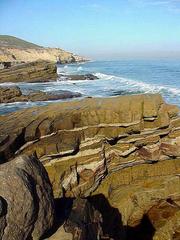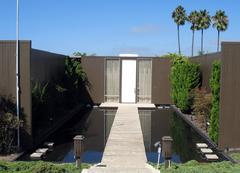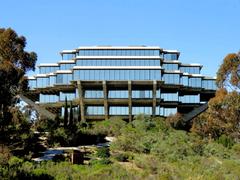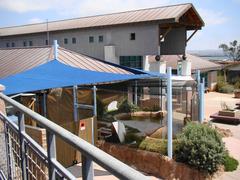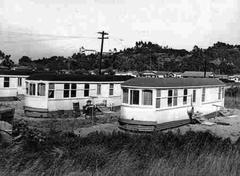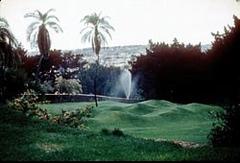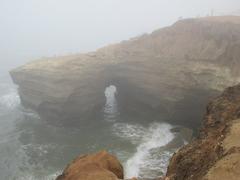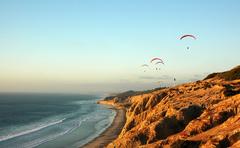Torrey Pines State Natural Reserve: Visiting Hours, Tickets, and Attractions in San Diego
Date: 03/07/2025
Introduction
Torrey Pines State Natural Reserve, perched atop the picturesque coastal bluffs of La Jolla in San Diego, is a sanctuary for rare flora, dramatic landscapes, and diverse wildlife. Encompassing 1,750 acres, it is renowned as the only mainland home of the endangered Torrey pine (Pinus torreyana), the rarest pine species in North America. This reserve is more than a hiking destination—it’s a living museum of Southern California’s vanishing wild coastline, preserving vital habitats, geological wonders, and a rich tapestry of cultural history.
This guide details everything you need for a rewarding visit: current hours, ticket and parking info, must-see trails, ecological highlights, accessibility, conservation efforts, and tips for making the most of your experience. For official updates, consult the Torrey Pines website, Torrey Pines Conservancy, and California State Parks.
Quick Guide: Hours, Tickets, and Access
Visiting Hours
- Open daily: 7:15 a.m. to sunset (hours may vary seasonally; check the official website for updates).
Tickets and Parking
- Admission: Free for all visitors.
- Parking: $15 per vehicle in main lots (South/North Beach); lots fill early on weekends and holidays.
- No separate tickets are required for entry.
Getting There and Accessibility
- Address: 12600 N Torrey Pines Road, La Jolla, CA.
- Public Transit: Local bus routes serve the reserve; see San Diego MTS for schedules.
- Accessibility: Guy Fleming Trail and select facilities are wheelchair accessible.
Visitor Center and Guided Tours
- The historic Torrey Pines Lodge Visitor Center offers educational exhibits and free guided walks on weekends, led by the Torrey Pines Docent Society.
Nearby Highlights
- Adjacent Los Peñasquitos Lagoon (birdwatching)
- La Jolla Shores, La Jolla Cove, and Cabrillo National Monument
- Torrey Pines Golf Course
Historical and Ecological Overview
Indigenous Heritage
The Kumeyaay people inhabited and stewarded this land for thousands of years, relying on its coastal resources and practicing sustainable land use.
Discovery and Protection
Botanist Charles Parry first documented the Torrey pine in the 19th century. Conservation began in 1899, with city leaders and philanthropist Ellen Browning Scripps protecting the area from development. The State of California designated it a natural reserve in 1959, and ongoing efforts by the Torrey Pines Conservancy and Docent Society help restore and safeguard its fragile ecosystems.
Ecological Significance
The reserve protects rare plant communities—coastal sage scrub, chaparral, salt marshes—and over 300 plant species. It is a vital refuge for endangered wildlife, including the California gnatcatcher, bobcats, foxes, and migratory birds.
Hiking Trails and Natural Attractions
Enjoy eight miles of scenic trails, each offering unique perspectives:
- Guy Fleming Trail: 0.7-mile accessible loop with ocean overlooks, wildflowers, and interpretive signs.
- Razor Point Trail: 1.3-mile round trip through sandstone ravines to dramatic ocean views.
- Beach Trail: 0.75-mile descent from cliffs to a pristine beach—steep on return.
- Broken Hill Trail: 2.5-mile round trip to the highest reserve point, with sweeping coastal vistas.
- Parry Grove Trail: 0.5-mile loop with wildflowers and a native plant garden.
Tip: Trail conditions may change due to weather or restoration, especially following the June 2024 wildfire. Always check the official trail status before your visit. (San Diego Union-Tribune)
Unique Flora and Fauna
The Torrey Pine
The rare Torrey pine is uniquely adapted to harsh coastal winds, drought, and saline conditions. Its preservation is a central focus of the reserve’s mission. (Wikipedia)
Plant Communities
- Coastal Sage Scrub: Home to California sagebrush, black sage, and buckwheat.
- Coastal Strand: Sand verbena, beach evening primrose at the beach margins.
- Salt Marsh: Halophytes and migratory birds thrive in Peñasquitos Lagoon.
Wildlife
- Mammals: Bobcats, coyotes, rabbits, squirrels, raccoons.
- Birds: Hawks, ospreys, shorebirds, the endangered California gnatcatcher.
- Reptiles: Lizards, rattlesnakes.
- Marine Life: Dolphins, gray and humpback whales visible from bluffs in winter/spring.
Beach Access and Tidepooling
- Access: Via Beach Trail or the South/North Beach parking lots.
- Activities: Walking, sunbathing, picnicking (on the beach only), and exploring tidepools at low tide. (Live That Adventure)
- Swimming: Allowed but use caution; there are no lifeguards within the reserve boundaries.
Visitor Center and Educational Programs
The Torrey Pines Lodge Visitor Center (open 9 a.m. to 5 p.m.) features:
- Interpretive exhibits and a gift shop
- Trail maps and ranger assistance
- Free guided walks by the Docent Society
- Restrooms (limited; check for maintenance notices)
Photography and Observation
Sunrise and sunset offer prime lighting for capturing the cliffs, pines, and ocean. Bring binoculars for spotting whales and birds. (The Tourist Checklist)
Accessibility and Tips
- Facilities: Restrooms at parking lots; none on trails.
- Accessibility: Guy Fleming Trail is paved and suitable for wheelchairs; steep terrain limits access elsewhere.
- Rules: Stay on trails, no dogs, bikes, or drones; carry out all trash.
- Safety: Protect yourself from sun and dehydration; avoid cliff edges and obey wildfire recovery closures.
Seasonal Highlights
- Wildflowers: Bloom late winter to spring, especially after rain or fire.
- Whale Watching: December–April from the bluffs.
- Docent Walks: Educational tours on weekends (Docent Society).
Conservation and Responsible Tourism
Torrey Pines is one of just 14 California State Natural Reserves and is managed for ecological preservation. Key initiatives include invasive species removal, fire recovery, and community education. (La Jolla Mom)
Support the reserve by:
- Staying on marked trails
- Avoiding disturbance of plants and wildlife
- Participating in volunteer programs or docent-led hikes
Nearby Attractions
- La Jolla Cove and Shores: Ideal for swimming, kayaking, and snorkeling.
- Torrey Pines Golf Course: Adjacent to the reserve.
- San Diego Historical Sites: Old Town, Balboa Park, Cabrillo National Monument.
Frequently Asked Questions (FAQ)
Q: What are the visiting hours?
A: Daily, 7:15 a.m. to sunset.
Q: Is there an entrance fee or do I need tickets?
A: No entrance fee; parking fees apply.
Q: Are dogs allowed?
A: No, to protect native wildlife.
Q: Is the reserve wheelchair accessible?
A: Some trails (e.g., Guy Fleming) are accessible; others are not.
Q: Can I picnic inside the reserve?
A: Picnicking is only permitted on the beach, not on trails or inside the reserve.
Q: What is the best time to visit?
A: Mornings or late afternoons, and during winter/spring for wildflowers and whale watching.
Plan Your Visit and Support Conservation
Make the most of your visit by:
- Arriving early for parking and cooler temperatures
- Respecting all posted rules and closures
- Downloading the Audiala app for guided tours and real-time alerts
- Joining a docent-led hike or volunteering with the Torrey Pines Conservancy
For official information, consult the Torrey Pines website and California State Parks.
Visual Gallery
- Torrey pines at sunset: Wind-sculpted trees against the Pacific sky.
- Clifftop trails: Panoramic views of ocean and sandstone formations.
- Historic Lodge: Pueblo Revival-style Visitor Center.
For interactive maps and more visuals, visit the official reserve website.
Further Reading and Sources
- Torrey Pines State Natural Reserve: Visiting Hours, Tickets, and History of San Diego’s Rare Coastal Pines, 2025, Torrey Pines Conservancy
- Visiting Torrey Pines State Natural Reserve: Ecology, Geology, and Essential Visitor Information, 2025, Outdoor Guides
- Ultimate Guide to Visiting Torrey Pines State Natural Reserve: Hiking, Wildlife, and More, 2025, MoneyInc & La Jolla Mom
- Torrey Pines State Natural Reserve: Visiting Hours, Tickets, and Conservation Insights, 2025, California State Parks
- San Diego Union-Tribune wildfire recovery article, 2025
Experience the rare beauty and ecological importance of Torrey Pines State Natural Reserve—hike the trails, observe the wildlife, and help protect one of California’s last wild coasts.






